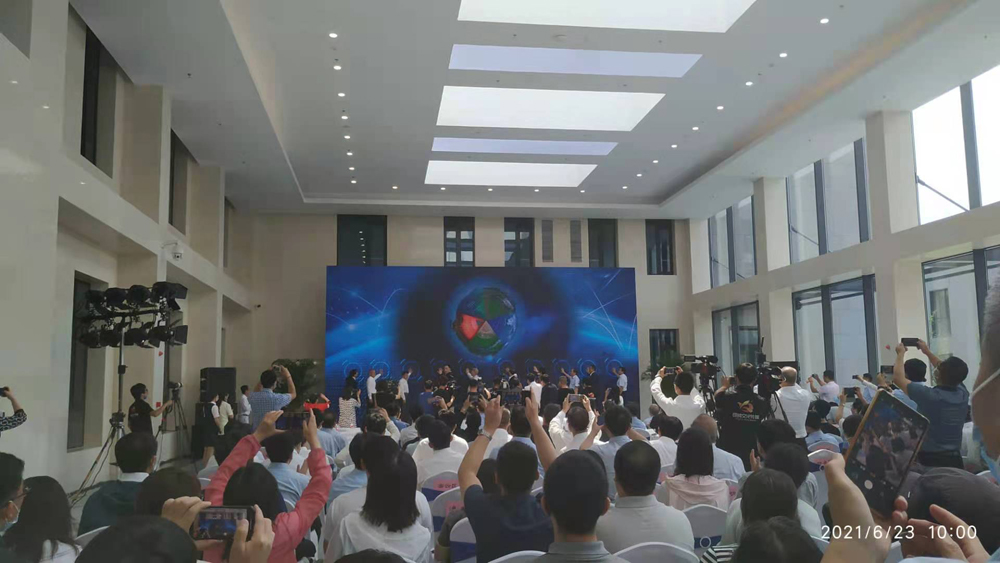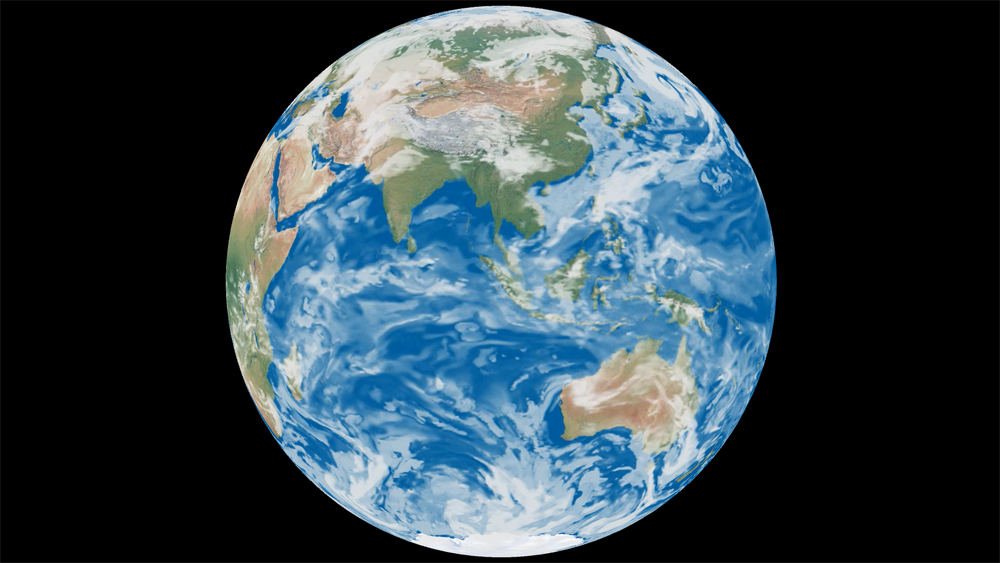EarthLab PIs and sponsors announce trial run together. (Image by LIN Zheng)
EarthLab's research team published an introduction to the facility on June 23 in
Advances in Atmospheric Sciences.
"Since the earth system is extremely large and complex, traditional theories and observations are too limited to meet the overall requirements of the scientific research community," said paper corresponding author ZHANG He, EarthLab researcher affiliated with the Institute of Atmospheric Physics (IAP) at the Chinese Academy of Sciences (CAS). "EarthLab is the first comprehensive virtual earth laboratory in China for simulation the physical climate system, environmental system, ecological system, solid earth system, and space weather system as a whole with a high-performance scientific computing platform."
Simulation by CAS-ESM 2.0, the key software systems of EarthLab. (Image by ZHANG He)
In partnership with Tsinghua University, IAP/CAS began construction of EarthLab in 2018. After successful trialing, inspections and approvals, EarthLab is expected to become fully operational — and open to universities and research institutes across the world — in 2022.
"Other countries, such as the United States and Japan, as well as some European countries, have built specialized numerical simulations facilities," ZHANG said, noting that China's vast and complex topography has been difficult to model accurately with various levels of observational and experimental resources across the country. "Weather, climate and environmental disasters occur frequently and seriously with grave losses of life and property. Consequently, a global earth system simulation system, as well as high-precision regional environmental simulation system, are urgently needed to better predict climate and environment variability, to prevent and mitigate natural disasters more effectively, and to formulate relevant national plans more scientifically."
According to Zhang, EarthLab will also become a science outreach base for children and students to learn more about Earth sciences. During an IAP outreach day in
2017, children voted on EarthLab's Chinese name: Huan. The name means "a place as vast as the earth where people live and upon whose land they depend".
EarthLab Outreach Hall. (Image by ZHU Jiang)
"Our ultimate goal is to predict Earth systems on a vast range of time scale, from seconds to hundreds of years, and of spatial scale, from 10 meters to millions of meters," ZHANG said. "Along with other earth simulators around the world, the development and construction of EarthLab will advance not only the understanding of the Earth's spheres and their interactions, and Earth's past, present and future, but also the progress of computational mathematics, high-performance computing and technology, and other broader fields."
Reference: Chai, Z. Y., and Coauthors, 2021: China's EarthLab—Forefront of Earth system simulation research. Adv. Atmos. Sci., https://doi.org/10.1007/s00376-021-1175-y
Media contact: Ms. LIN Zheng, jennylin@mail.iap.ac.cn



